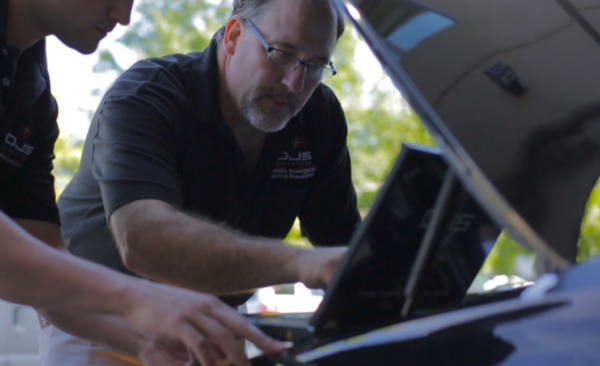The Synergy of Crash Data Retrieval and Call Detail Records

The combined power of Crash Data Retrieval (CDR) and Call Detail Records can be instrumental in providing crucial insights regarding the cause of the collision for reconstruction engineers. CDR technology allows experts to gather essential data from a vehicle’s onboard computer, while Call Detail Records offer valuable information regarding mobile communications before, during, and after the collision.
CDR refers to the process of extracting data stored in a vehicle’s Event Data Recorder (EDR) or “black box.” An EDR is an electronic device installed in most modern vehicles, which automatically records various parameters related to the vehicle’s operation such as speed, braking, acceleration, airbag deployment, and other critical data. In the event of a collision, this information is stored as a snapshot of the vehicle’s performance, before, during, and after the crash.
Analysis of CDR information sheds light on factors leading to the collision including speed, direction, and actions taken by the vehicle’s occupants. This data is particularly useful in cases where there are conflicting accounts of how the collision occurred. For example, pre-crash data can reveal sudden deceleration or evasive maneuvers, indicating external factors that contributed to the collision.
On the other hand, Call Detail Records refer to the metadata generated by telecommunication service providers (such as Verizon, AT&T, and T-Mobile) whenever a call or message is made or received by a mobile device. This metadata includes details such as date, time, duration, location of the cell tower utilized for the action, as well as the phone numbers involved. Data usage can also be obtained; however, the records do not provide details about which application was utilizing data.
Call Detail Records can assist in establishing the communication timeline of involved parties leading up to and at the time of the collision. This information can be vital in determining whether a driver was distracted by a call or text message at the time of the crash. These records are particularly useful when the phone is damaged or lost in a crash.
While this data does not show the location of the phone when it makes a call or sends a text message, the cell tower utilized for transmittal is provided. This allows experts to determine an approximate travel path if there is a long phone call or a stream of text messages that incorporated multiple cell towers. In the event that a driver flees the scene of a crash and denies involvement by claiming that their car had been stolen, Call Detail Records may be utilized to verify if their phone was actively transmitting through a cell tower near the crash site around the time of the collision. The same data can be useful regarding “hit and run” suspects. Metadata compiled in Call Detail Records can also assist with verifying the accounts of witnesses who called emergency services and help investigators to establish an accurate timeline for the events that occurred.
The potential complexity of collision reconstruction cases often requires multiple approaches for gathering and verifying accurate information. The combination of Crash Data Retrieval from vehicle Event Data Recorders and Call Detail Records provides experts with additional powerful tools to reconstruct collisions. By analyzing vehicle dynamics, the severity of impact, airbag deployment, and communication timelines, experts are able to piece together a detailed picture of the collision sequence and contributing factors. That being said, understanding the synergy of Crash Data Retrieval and Call Detail Records creates significant advantages towards determining fault and promoting road safety.

